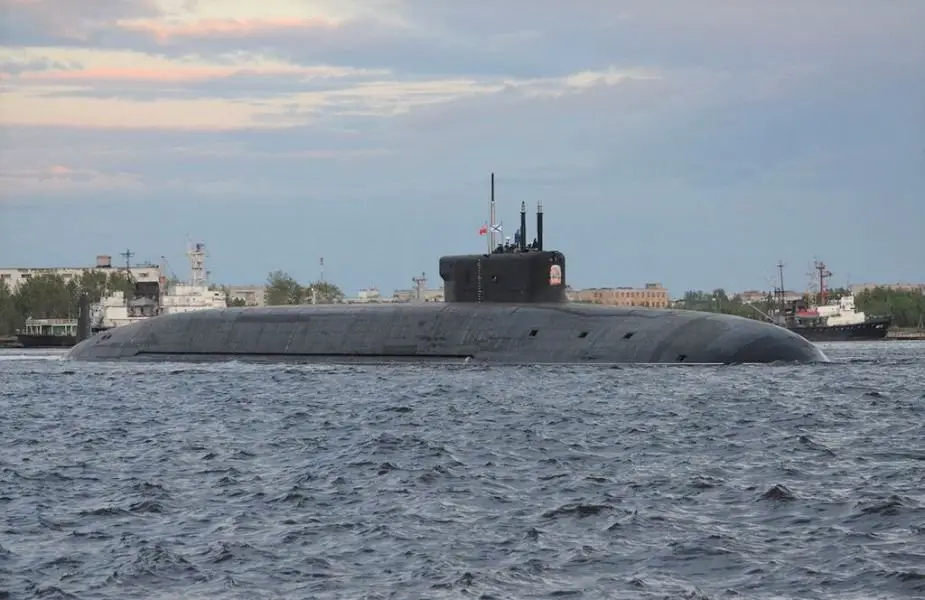Breaking news
Russian Sevmash shipyard to introduce block-modular submarine construction.
The historic experience of Russian shipbuilding calls to radically upgrade production before the construction of next-generation submarines. Sevmash Shipyard said it is preparing to introduce block-modular technology into the construction of nuclear submarines, the Independent Military Review writes.
Follow Navy Recognition on Google News at this link

Knyaz Vladimir Borei-A class nuclear submarine of project 955A SSBN (Picture source: Twitter account Capt Navy)
In its history, Sevmash has built 133 nuclear submarines and another four are undergoing trials. Sevmash was upgraded in 1970s for the construction of third-generation submarines. New bigger slipway #55 was built for project 941 SSBN. A lot of new equipment was installed for the construction of project 971 SSN.
The Soviet disintegration stopped the re-equipment. It is necessary to catch up now and eliminate the technological gap with the West. It concerns block-modular construction used to build U.S. Virginia-class subs, British Astute and French Suffren.
The technology assembles submarines from major blocks with equipment. It decreases labor intensity and accelerates construction. So far, the shipyard in Severodvinsk uses modular-aggregate method introduced for the construction of third-generation submarines, such as projects 971 and 941. The method delivers ready-made but untested sections to the slipway. They are united into blocks for hydraulic trials and separated again. It was an advanced technology in late Soviet times. The technical progress in shipbuilding has developed a lot since then and another step forward is to be made. The block-modular method will decrease time and production costs. It will accelerate the construction in the slipway, as most work to equip the hull will be done by specialized workshops.
Sevmash said its CEO Mikhail Budnichenko initiated the new approach. He has been working at Sevmash since 1977 and eight years as CEO. Project leader Alexander Spiridonov said a taskforce for the technology was created in 2016. It also included representatives of Rubin and Malakhit design bureaus in St. Petersburg. The two bureaus are dealing with all new projects of nuclear submarines.
The United Shipbuilding Corporation then launched a project to design the block-modular method and use it in the construction of next-generation submarines.
Sevmash is upgrading production capacities and creating new infrastructure. It is necessary to build up new logistics and services. The block-modular method is being discussed in various departments. If the idea is approved, Sevmash will be the first Russian enterprise to use the innovative technology in submarine construction.
The historic experience of Russian shipbuilding calls to radically upgrade production before the construction of next-generation submarines. Sevmash Shipyard said it is preparing to introduce block-modular technology into the construction of nuclear submarines, the Independent Military Review writes.
SSBN remain the backbone of the Russian naval nuclear deterrence. The submarine component of the triad comprises U-boats built in Severodvinsk. It includes the Ryazan only remaining second-generation SSBN, six SSBN of project 667BDRM and four latest SSBN of projects 955 and 955A, including the Knyaz Vladimir built by the upgraded project 955A.
In December 2015, Rubin Design Bureau CEO Igor Vilnit said after the laying ceremony of the Imperator Alexander III SSBN that “the construction cycle of nuclear submarines is long and ranges from the assignment, perception of requirements to the new generation of submarines, and integration of the requirements. It also takes much time to understand what the industry can produce with time. Now Borey-A-class submarines are built and the bureau is designing a future series in close contact with Navy institutes. We are designing a new project and formulating the requirements together with the Navy. It is secret work. It has been planned and is ongoing according to the construction cycle, operation and decommissioning of submarines.”
It is clear that Vilnit was speaking about new-generation submarines to be built after projects 955 and 955A are completed. The United States has similar subs by the missions and arms. “Our strategic submarines have their own advantages. We work to develop them on a par with foreign analogues,” he said.
The United States is developing Columbia-class SSBN to replace Ohio. It will have several latest characteristics and a life cycle of 42 years without reactor refueling. Columbia has to provide supremacy in naval arms. It has therefore to be superior to projects 955 and 955A. As Moscow seeks parity with Washington in nuclear deterrence, it has to correspondingly respond and upgrade SSBN. The introduction of the block-modular technology by Sevmash is a step in the direction.
Another guideline is to minimize the number of submarine projects and unify equipment, characteristics and training of the crews, etc. Each project will have a series of submarines. Project 955 offers an example.
Initially, the Yuri Dolgoruky was built. It was laid in 1996 and left the slipway in 2007. The Alexander Nevsky and the Vladimir Monomakh followed to bring the number of project 955 submarines to three. “Borey-A was then modified with new qualities,” Vilnit said. “The equipment of submarines has been produced for a long time. It has to be replaced by modern and better equipment. It is the main difference of Borey-A from the initial project. It is similar to Borey in the main features and characteristics,” the Rubin CEO said.
© Copyright 2020 TASS Navy Recognition. All rights reserved. This material may not be published, broadcast, rewritten or redistributed.





























